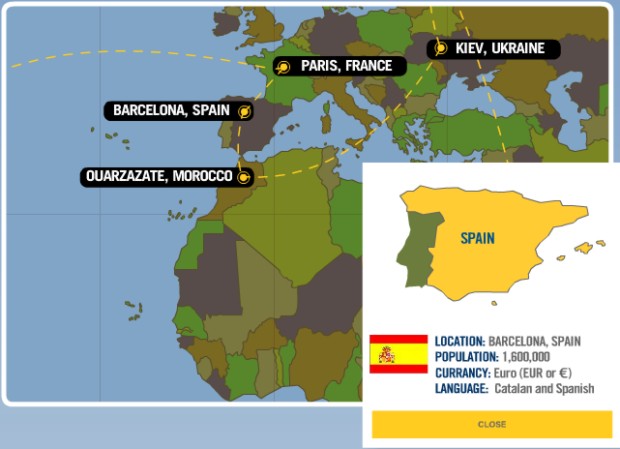|
|
 |
|
|
 |
 |
|
|
 |
 |
 |
|
Barcelona's picturesque beaches, mountain ranges and Mediterranean climate are the perfect backdrop for Spain's second largest city. Barcelona is the capital of Catalonia, the richest of the 17 autonomous communities that constitutes Spain. Located on the northeast coast of the Iberian Peninsula 100 miles south of the Pyrenees, Catalonia is the most industrial region in Spain with the country's largest port located in Barcelona. The city has been inhabited since 3500 BC and was first colonized by the Ancient Greeks and Carthaginians.
Barcelona is the hub for the revival of the Catalan language, which was banned for many years due to the conflicts between Catalonia and Spain. The contentious relationship between Catalonia and Spain ebbed and flowed for hundreds of years until 1979 when the Spanish government officially recognized Catalonia as a nationality and it regained its autonomy. Although Barcelona has a reputation for its hot nightlife, the city is also known for its gorgeous architecture and art scene. The city's cultural verve grew exponentially after Francisco Franco's death in 1975, and now has over 60 museums such as the Museo Picasso, Fundación Joan Miró, and the Museu d'Art Contemporani de Barcelona (MACBA). In fact, many artists called Barcelona home including Salvador Dali, Joan Miro and Pablo Picasso.
Barcelona also has a long-standing sports tradition. FC Barcelona, the city's professional football team, is the apex of the Barcelona sports community and a member of La Liga, Spain's professional football league. Fans, also known as culers, flock to Camp Nou, Europe's largest football stadium, to cheer on the 2006 La Liga Champions. Barcelona was also host to the 1992 Olympic Games.
|
|
|
Museu Nacional d'Art de Catalunya (MNAC)
The National Art Museum of Catalonia features an ample collection of Romanesque, Baroque, Renaissance and Gothic art mostly native to Catalonia from the 19th and 20th centuries. MNAC was created in 1990 but did not initially open its doors until 1995 with the Romanesque Art section, subsequently followed by the other sections over the next few years. The museum had its official grand opening in 2004, once the complete permanent collection was situated. The museum is located in the Palau Nacional, which was originally built in 1929 for the World's Fair and then revamped again in 1992 for the Olympics. The museum features work from world renown artists such as El Greco, Velázquez and Rubens.
Parc Güell
Designed by architect Antoni Gaudì, this UNESCO World Heritage Site is one of the prettiest attractions in Barcelona. The idea of Count Eusebi de Güell, the park was initially designed to be a private garden community featuring its own marketplace and church. The park was built from 1900 to 1914, but the city eventually took control of the property in 1926 and turned it into a public park. The park's centerpiece is an ornate tiled lizard that marks the entrance to the would-be marketplace.
L'Aquarium de Barcelona
With the Mediterranean as one of Barcelona's backdrops, it is only fitting that the city has an impressive aquarium. In fact, it is the largest aquarium in Europe, with 21 glass tanks each depicting a different marine habitat. Some say that the best part of the aquarium is the "oceanarium," which represents the Mediterranean as its own self-sustaining ecosystem.
|
 |
|
|
 |
 |
 |
|




